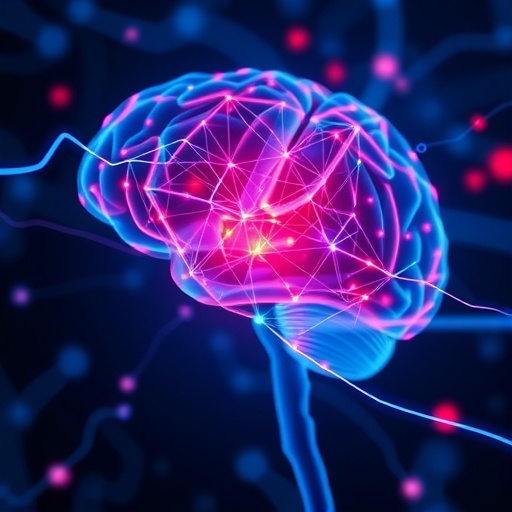
A groundbreaking approach to combating addiction has emerged from the collaborative research efforts of scientists at the University of California San Diego and the National Institute on Drug Abuse (NIDA). This innovative strategy utilizes a bespoke biochemical method that involves custom-engineered proteins known as ion channels, specifically tailored to respond to cocaine. In a remarkable demonstration of neural engineering, these proteins can effectively neutralize the drug’s rewarding effects, intervening in the brain’s positive feedback loop that perpetuates addiction. The significance of this development lies in its potential to rewrite the very rules of addiction therapy.
Addiction is an intricate condition characterized by neural pathways that amplify cravings and reinforce substance-seeking behavior. These pathways, designed to reward healthy activities such as eating or physical fitness, become hijacked by drugs and alcohol. The research team has taken an unprecedented step by designing ion channels that are activated exclusively in the presence of cocaine, disrupting the cycle of positive reinforcement associated with drug use without impairing the natural rewards derived from everyday activities.
The study utilized a rat model, providing a controlled environment to closely observe the impact of this engineered ion channel on drug-seeking behavior. The lateral habenula (LHb), a pivotal brain region tied to reward processing, was selected for investigation due to its critical role in motivation regulation. The results were striking: rats equipped with the cocaine-activated ion channels exhibited a marked reduction in cocaine-seeking behavior compared to their unmodified counterparts. This observation identifies a promising avenue for future therapeutic interventions targeting behavioral addiction in humans.
One of the most compelling findings of this research pertains to the way these ion channels interact with neuronal activity. The cocaine-activated protein engineering prompts greater excitation of LHb neurons only in the presence of cocaine. This unique mechanism effectively diminishes the dopamine surge typically produced by cocaine, thereby reducing instances of drug consumption. The implications are far-reaching; not only does this offer hope for reducing cocaine addiction, but it does so in a manner that preserves the enjoyment of natural rewards.
A pivotal challenge faced by addiction researchers has been the prevention of drug-related behaviors without compromising the natural drives for basic rewards, such as food and social interaction. The engineered ion channels present a solution to this conundrum, as their targeted activation allows for treatment that curbs addiction while leaving the brain’s capacity for natural reinforcement intact. The efficacy of this method raises optimistic questions about its scalability and applicability to various substances beyond cocaine, such as opioids and stimulants.
The research team posits that the neurobiological underpinnings of addiction share commonalities across different substances, suggesting a potentially universal approach to treating addiction. Moving toward human trials will be the next significant step in verifying these findings, ensuring that this innovative treatment protocol can transition from the laboratory to the bedside. While the road ahead is laden with challenges, the initial results present a fertile ground for further investigations and developments.
This pioneering study, published in the esteemed journal Nature, sheds light on new methodologies that could reshape addiction treatment paradigms. The primary researchers, Scott Sternson, Ph.D., and Michael Michaelides, are experienced in this field, bringing with them a wealth of expertise from their respective institutions. The research received backing from significant funding sources, including the National Institute on Drug Abuse’s Intramural Research Program, Howard Hughes Medical Institute, and the W.M. Keck Foundation. Their engagements with Kriya Therapeutics signal the potential for commercialization of this technology in the future.
As researchers navigate the complexities between advancing scientific discovery and translating findings into real-world applications, there remains an urgency to understand the implications of such interventions. The neurobiological mechanisms underlying addiction have long confounded scientists, but the systematic targeting of specific receptors and channels may yield breakthroughs that were once thought improbable. In closing, the engineered ion channels serve as a beacon of hope for those battling the shackles of addiction, suggesting that our understanding of the brain’s reward systems is not static but rather ripe for innovation.
In conclusion, the intersection of neuroscience and therapeutic development underscores the potential of this new strategy to disrupt the cycle of addiction. As the research progresses, the prospect of interventions that could offer recovery without depleting the joy of life presents a compelling narrative for those invested in public health.
Such advancements in genetic engineering and biochemistry will surely foster discussions on ethical considerations and societal impact. The future of addiction treatment may very well depend on how successfully we can bridge the gap between scientific inquiry and meaningful change in people’s lives.
Subject of Research: Custom-engineered proteins to combat cocaine addiction
Article Title: A Novel Biochemical Approach to Reverse Cocaine Addiction
News Publication Date: October 2023
Web References: Nature Journal
References: DOI: 10.1038/s41586-025-09427-8
Image Credits: None
Keywords
Cocaine, Addiction, Neuroscience, Drug-seeking behavior, Biochemical approach
Tags: biochemical methods in addiction researchdesigner proteins for addiction treatmentdisrupting drug-seeking behaviorengineered ion channels for cocaineinnovative approaches to addiction therapyNational Institute on Drug Abuse collaborationneural engineering in addiction recoveryneural pathways and substance abusepositive reinforcement in addiction therapyrat model in addiction studiesrewiring brain circuits for addictionUniversity of California San Diego drug study





